Sponsoring my research. Any volunteers?
The triple asteroid (93) Minerva – two additional observations!
September 15, 2009Triple Asteroid (93) Minerva and future stellar occultations
October 13, 2009Hello,
I mentioned several months ago that I am a Principal Investigator at SETI Institute. Most of you have no idea what it means to be a “Principal Investigator” or a “soft-money” researcher. That will be the topic of this post.
This is a rough simplification but in the US there are three types of astronomers. Let me describe you a bit who we are:
- The professors (I should have capitalized that…) work in a university, they are paid by the university to teach and to do their research. They generally have a group of postdocs and students who work with them. Each university have different requirements at the level of research time vs teaching duties vs administrative tasks. In general, the most reputed universities tend to provide more time for the professors to perform their research. the professors are those who have enough time to lead large projects (e.g. the development of a large telescope into a consortium). After obtaining their tenure, their career is judged not only on the number of articles they published but also their involvement into large projects or the way they lead their group.
- The staff researchers fully paid by their organization such as NOAO, ESO, JPL, NASA and some universities. These astronomers are fully paid by their organization. They generally have duties related to this organization such as the management of a telescope, instruments, or a space missions. Some of them are civil servants (NASA), other are hired for a limited time (5-7 years depending the duration of the project).
- The “soft-money” researchers are paid by federal grants and/or private donations. They are more independent since their research depends mainly of the projects for which they are paid. I am one of these “soft money” researchers. We are everywhere! Most of us are in universities (I am at UC-Berkeley), in non-profit organizations (such as SETI Institute) or federal research centers such as LBL. I don’t think there is the equivalent of the soft-money researchers in Europe, but I may be wrong. Some of us preferred to be called “science consultants” 🙂 since we are paid for a task that we have chosen, we are the free electrons of astronomy.
So let’s talk about the subject that I know the most about, myself… Who paid me and for what?
My research at the SETI Institute was supported by a NASA-PAST (a program dedicated to support Planetary Science research) until July 2009. It ended a few months ago and I just sent my final report. This grant has been supported my research on Multiple Trojan Asteroids for a while, since I wrote it 5 years ago. My research changed significantly over this time but I was pleasantly surprised to see in my final report that after all this time, I completed a large part of my goals. Since I am a researcher at UC-Berkeley (April 2002) my research was essentially supported by the CfAO (center for Adaptive Optics), an NSF science and technical center aiming at developing adaptive optics technology in the US. It is extremely rare for a soft-money researcher to have funding support over such a large period of time, so I am very lucky. Most of the federal grants are limited to 3-5 years and rarely pay a researcher full time. The CfAO is supposed to end in October 2009. Interestingly my two main sources of funding ended very recently.
So what’s next? This is without doubt the worst part of being a soft-money researcher. The quest for funding is difficult, unpredictable and stressful. I did anticipate the end of my funding thanks to my fantastic grant managers who helped me over these years (Sibani Bose at UC-Berkeley and Brenda Simmons at SETI Institute). I should mention that having their support helped me 1. getting a sense of my financial status since I have sometimes 4-5 grants to deal with 2. getting motivated to continue this quest for funding by submitting new grants. The good news is that I will continue my research on multiple asteroids and expand it to spectroscopy in visible and near-infrared under the auspice of an NSF grant. At UC-Berkeley, my future remained uncertain but I am waiting for responses for several grants that I wrote in 2008-2009, I think I am fine until beginning of 2010.
An interesting part of my job is that this uncertainties push me to challenge myself and find new ideas and new projects. For instance, I like to attend talks or conference session unrelated to my research, since it allows me to get a hint about the other field research and sometimes get ideas or start new collaborative effort. However, the dark side of relying on external grants is that because I don’t have funding I sometimes need to give up a promising project for which I already involved a significant amount of time.
It is also very interesting to see the interactions between researchers, staff and professors. We do not have the same time scale, the same way of thinking and work attitude. Soft-money researchers are mostly judged based on their publication rate (and citations). Our time scale is shorter than the professors ones, since we need to get a result before our grant expired. We are more flexible and diverse in term of scientific interests, most of us have switched to a new field of research during their career. Our calendar is also highly linked with federal agencies proposal deadlines. For instance, don’t waste your time writing a long email to one of us before the NSF-AAG deadline (Nov 15 this year) since it is very unlikely that you will get a response. I am a bit caricatural but close to the reality and I hope to get input from other researchers after posting this on my blog.
SETI institute, a non-profit organization which manages our federal and private grants, is mostly composed of soft-money researchers (the PIs). Each of us is responsible for his/her research and his/her group. Since I arrived at SETI Institute I tried to be more involved in the scientific life and take advantage of the resources available in this amazing place. The Institute launched a few years ago a program called “adopt-a -scientist” which offers to individual to make a direct contribution to the research of one of the PIs and be involved in this research. I recently got involved in this program and in January 2010 was adopted! An article related this story was published last week in space.com.
Following the business practice of Ben & Jerry’s, Jeff Breidenbach and Jeff Marshall, funders of Mail Archive, support every year a few causes and decided to make a donation to support my research with adaptive optics. To thank Jeff for his support, I gave him a tour to Mauna Kea in Hawaii and, with my colleague Olivier Lai, we showed him the CFHT. This day was an amazing experience for all of us. Olivier brought us in the room where the interferometric bench (or delay line) of the OHANA instrument is located. OHANA is a state-to-the-art project in astronomy which aims at linking by interferometry several telescopes on the mountain forming a virtual telescope with a baseline of 800 m. I found out that Jeff supported my project because he had an interest in optics and specifically in interferometry. This visit has been very inspiring for all of us and Jeff’s questions motivated Olivier and I to discuss about this new technique and his potential application for planetary science. That’s why we recently started a new project related to interferometry technology. We are now searching for funding (back to the topic of this post 🙂 ) to build this innovative instrument which will be based on optical fibers. It should be capable of imaging large exoplanets around nearby stars. We envision to test this technology at Lick Observatory on the Shane-3m telescope with a first light in 2012. Quite soon…
Thanks Jeff and Jeff for your support. Any more volunteers to support my research, please let me know!
Franck M.
A few pictures taken during Jeff’s visit at CFHT on the top of Mauna Kea, Hawaii
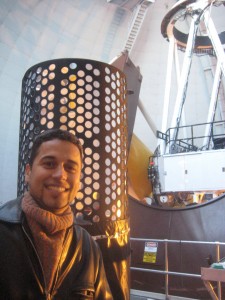
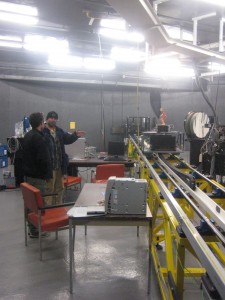
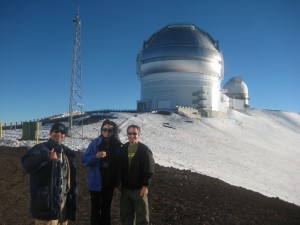
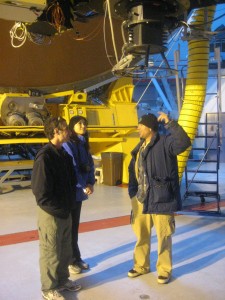


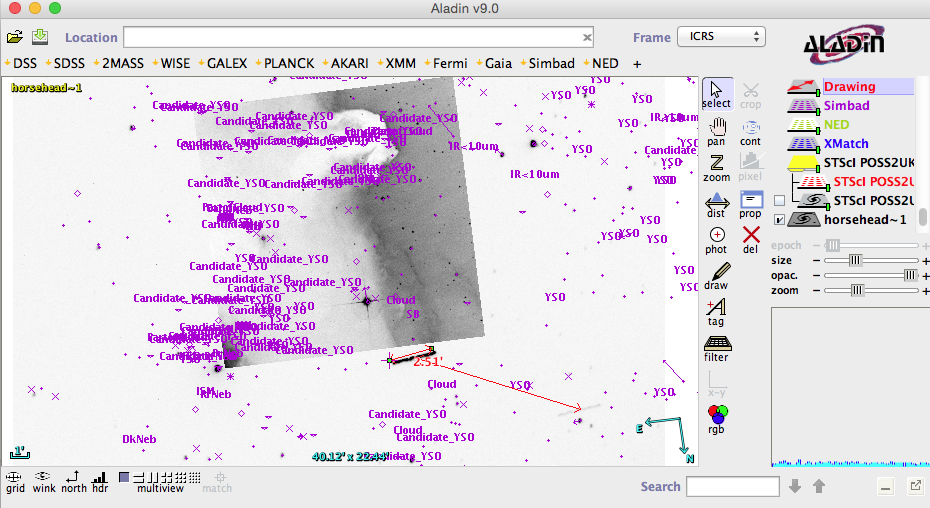
3 Comments
Hi
I would like to contact you..
Let me know what you think,
Cheers!!
Dear Franck:
I read your interesting write-up about soft money and was wondering what your ideas are regarding management and economic improvements of a non-profit organiztion such as yourself in which researchers are operated on soft money.
Specifically, I have the follwong questions:
1. Do you think that majority of the researchers are happy with the soft money arrangement? Even in an economic downturn?
2. How do you think such an organization can enhance and strengthen its financial position ?
3. How can such an organization increase retention of its scientists/researchers considering the uncertainty of the soft money approach to funding?
4. Do you think it is a good idea for an organization such as the one you work for make a transition to a more balanced funding approach such as hard and soft money combined?
5. How do you think such an organization can restructure or modify its business model to strengthen its financial position and security of its researchers? Do you think that it is a good idea to, for example, lobby to become one of the centers of excellence, say, for NSF in certain specific area so that hard money is channeled in addition to soft money?
6. Any other thought ? Thanks.
As I am working on a project regarding the soft money issues your opinion will be valuable for me and it is hoped that you can send me something, if at all possible, before the end of this weekend.
With many thanks in advance for your thoughts and willing to share them with me.
Sincerely,
Bruce Chehroudi, PhD
ChehroudiB@aol.com
Dr. Chehroudi, has accumulated over twenty years of technical and leadership experiences in different capacities and organizations. This includes such positions as a Principal Scientist appointment at the Air Force Research Laboratory (AFRL) ERCInc, a Chief Scientist at Raytheon STX, a Visiting Technologist at Ford’s Advanced Manufacturing Technology Development (AMTD) center, a tenured Professor of Mechanical Engineering at Kettering University and University of Illinois, and served as a Senior Research Staff/Research Fellowship at Princeton University. Dr. Chehroudi directed numerous interdisciplinary projects in areas involving chemically reacting flows, combustion and emission of pollutants, sustainable and alternative energy sources, distributed ignition, material/fuel injection, advanced pollution reduction technologies, propulsion concepts, gas turbine and liquid rocket engines, combustion instability, laser optical diagnostics, spectroscopy, supercritical fluids and applications in environmental and propulsion systems, advanced composites, MEMS, nanotechnology, and micro fluidics. He has won many merit and leadership awards by such prestigious organizations as the Society of Automotive Engineers (Arch. T. Colwell Merit Award, Forest R. McFarland Award, Outstanding Faculty Advisor, Sustained Leadership in Professional Service), American Institute of Aeronautics and Astronautics (Best Publication Award of the Year), Air Force Research Laboratories (Outstanding Technical Publication Award, STAR Team Award), Institute of Liquid Atomization and Sprays Systems (Marshall Award), and has been a consultant with many organizations such as, Ford, GM, Honda R&D, AFRL, Honeywell, NASA, AFOSR, VW, Bosch, Siemens, NGK, Cummins, and TRW. Through professional societies, Dr. Chehroudi delivers invited professional seminars on Management of R&D Teams and Organizations, Management of Innovation, Combustion and Emission of Pollutants in Automotive and Gas Turbine Engines, Ignition Issues, and Liquid Injection Technologies. He has a PhD from Princeton University, is an Associate Fellow of AIAA, and has more than 150 publications with extensive experience in both scientific and management areas and intensive trainings in finance and financial engineering.
love your style I will subscribe for your feed please keep posting!